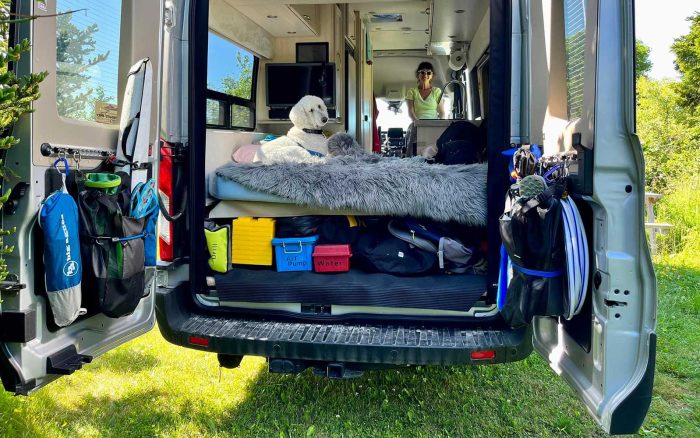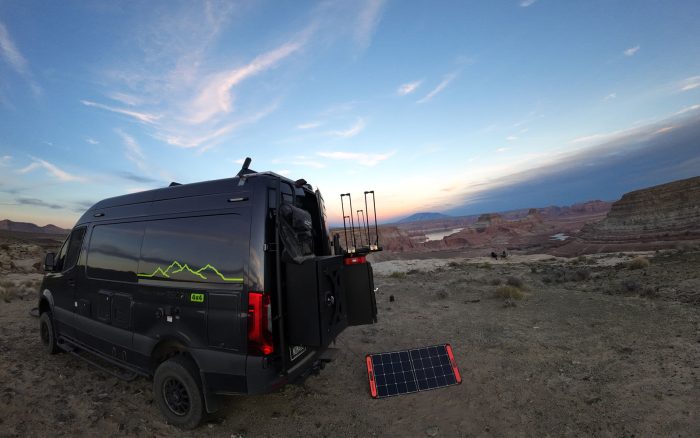PW on the Map – Utah Travel Guide
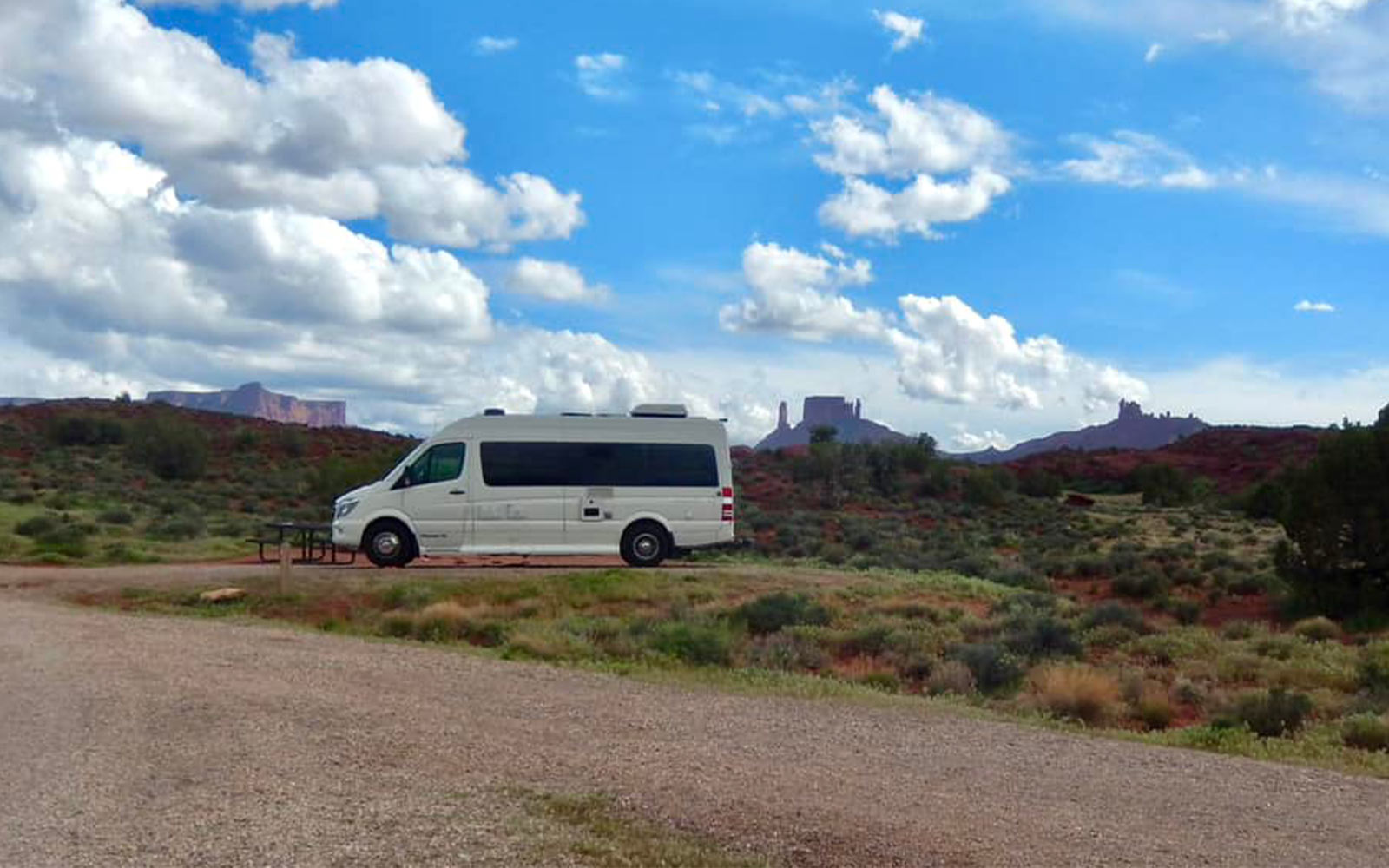
The Best Destinations for RV Travel in 2023.
Utah is a top-rated destination for travellers, and we can see why! Mountain passes and desert beauty are all available to be seen from the comfort of your RV. The vistas of Utah have been sculpted by wind and water over millions of years. Salt Lake City has what you’re looking for if you’re more into a city break. Utah has everything you’re looking for when all has been said and done! Here’s the Pleasure-Way guide to Utah.
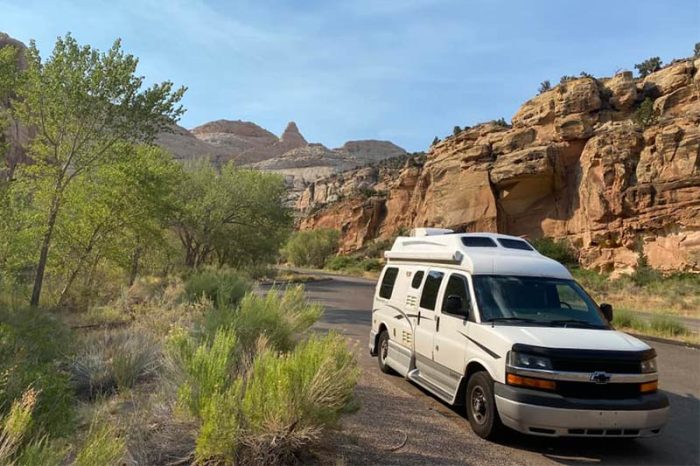
Arches National Park
Arches National Park is located just 5 miles (8 km) north of Moab, Utah. This National Park boasts the largest concentration of natural sandstone arches on Earth, with over 2,000 arches scattered across the 76,510-acre expanse.
Need to Know: Between April 1 and October 31, 2023, Arches National Park is implementing a timed entry reservation system. Reservations will allow visitors to enter the park during a one-hour window. For example, a 7 a.m. ticket will allow entry between 7:00 and 7:59 a.m. Reservations are made with a Recreation.gov account.
Entrance Fee is $30/vehicle.
Camping at Arches National Park
The Devils Garden Campground is open year-round and is eighteen miles from the park entrance. Facilities include potable water, picnic tables, grills, and both pit-style and flush toilets. There are no showers. Some sites will accommodate RVs up to 30 feet in length.
- You can reserve campsites for nights between March 1 and October 31. Between November 1 and February 28, all sites are first-come, first-served.
- You can make reservations for standard sites from four days and up to 6 months in advance.
- The fee per night for an individual Devils Garden campsite is $25. Group size is limited to 10 people and two vehicles.
- Campsites are usually reserved months in advance during the busy season (March-October). If you have yet to book a site before arrival at the park during these months, plan on utilizing other camping options in the Moab area.
- There are no services inside Arches National Park. The nearest place to get food, gas, and supplies is Moab, approximately 45-60 minutes drive from the campground.
Hiking at Arches National Park
One of the more rewarding ways to see the park is on foot. Arches features a wide variety of hikes, from short 10-minute walks (suitable for all ages) to 4-hour hikes into some of the remote sections of the park.
- Balanced Rock 0.3 mi (0.5 km) Round Trip 15-30 min
- Broken Arch 1.2 mi (2 km) Round Trip or 2 mi (3.2 km) with loop 30-60 min
- Park Avenue 1 mi (1.6 km) one way 30-60 min
- Tower Arch 3.4 mi (5.6 km) round trip 2-3 hrs
- Devils Garden Primitive Loop 7.2 mi (11.5 km) round trip 3-5 hrs
While Arches National Park is known for its outstanding geologic features, it also contains irreplaceable cultural resources and sensitive high desert ecosystems. Water is rarely available in the backcountry; plan to carry all you need. Primary safety considerations include steep terrain, loose rock, lightning, flash floods, and dehydration. You must know and comply with all regulations.
- You must have a permit for all overnight stays in the backcountry.
- Permits are available in person at the Backcountry Permit Office two miles south of Moab up to seven days before the trip start date and up to 4:00 p.m. MST.
- Each permit is limited to seven people, three nights per campsite, for a total of seven nights. Permits cost $7 per person.
Zion National Park
Zion National Park is located in southern Utah near the city of Springdale, not far from Las Vegas, Salt Lake City, or St. George. Zion National Park is like the set of a movie that’s so grand you know it’s fake, but you don’t care because it’s beautiful to look at. Zion National Park is open year-round. The park has two visitor centers that are also open throughout the year. Visitors are encouraged to stop and learn how to visit the park with minimum impact on the fragile desert environment. At the visitor centers, you will find maps, brochures, and books available to help you enjoy your visit.
Need to Know:
- Weekly passes for private vehicles are $35 and allow access to Zion for seven consecutive days.
- The Riverside Walk is accessible for those with low mobility for the first 0.4 miles.
Camping at Zion
- South Campground – Individual sites: $20/night Group sites: $50/night
- Watchman Campground – Individual sites (reservable): $20–30/night, Group sites (reservable): $50–130/night depending on group size
- Zion Crest Campground at Zion Ponderosa
Hiking in Zion National Park
Here are some of the best hiking trails in Zion National Park. Remember to bring sunscreen and water on all hikes! Wear the correct shoes, use the bathroom before heading up, and keep an eye on the weather.
Angels Landing: An extremely popular trail in Zion National Park, a permit is required to hike this trail. Permits are issued through seasonal or day-before lotteries on the National Park Service Website. The seasonal lottery allows prospective hikers to rank, in order of preference, the seven days and times when they will be in the park. Each seasonal lottery opens at 8 a.m. and closes at 11:59 p.m. The day-before lottery is available for all the spontaneous sojourners and second chancers who didn’t get an Angels Landing permit through the seasonal lottery. Enter between midnight and 3 p.m. the day before your desired hike date. You’ll be notified via email by 4 p.m. if you get the coveted permit. Make sure to carry enough water and snacks for the whole hike, and bring a small backpack to hold it all so your hands are free to hold onto the chains.
- Note: No permits are available April 3-6, 2023; the trail is closed for maintenance.
- This hike may not be suitable for young children or those not in good physical shape.
Observation Point Trail: At 6,521 feet in elevation atop Mount Baldy and jutting out into one of the most comprehensive sections of Zion Canyon, right around the Big Bend, Observation Point commands a view of nearly every major attraction in the canyon. The hike is very steep, with short sections of inviting, level strolls through beautiful Echo Canyon. Hikers ascend almost 2,000 feet during this trek, so this is not one to take on if you’re an unseasoned hiker or have children with you.
- This trail is only accessible from East Zion via Zion Ponderosa Ranch Resort.
Emerald Pools: All hikes lead to sparkling waterfalls and glistening pools. Majestic sights can be seen all along the trails, including views of Lady Mountain, the Great White Throne, Red Arch Mountain and cliffs in all directions. The lower trail is well suited for young children, baby strollers and people in wheelchairs (with some assistance). It’s easy to reach the lower pools, a bit more difficult to the middle, and strenuous to the upper reservoir.
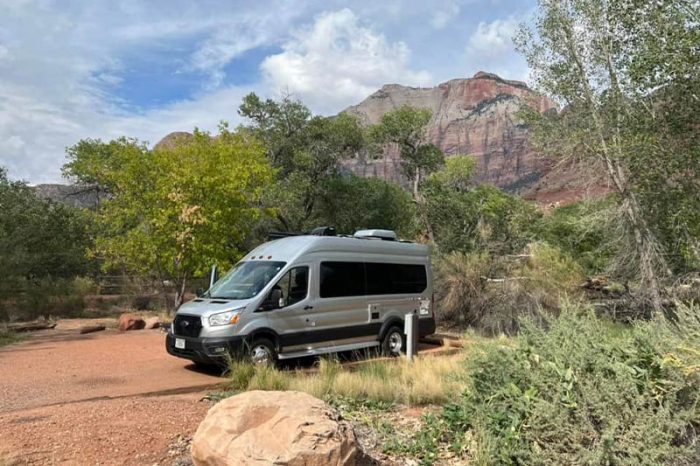
Capitol Reef National Park
Capitol Reef National Park is a 100-mile pinch in the Earth’s crust in the geographical middle of nowhere. Still, it’s overloaded with geological, cultural and sensory attractions.
- A weekly pass is $20 for a private vehicle.
- Capitol Reef is pet friendly for pets on leashes in certain areas. Check with park officials on exactly where!
Camping at Capitol Reef National Park
Fruita Campground: the only developed campground in the park. Sites at the Fruita Campground are $10 per night. Senior and access pass holders receive a 50% discount on their campsite. All sites at the Fruita Campground are first come, first serve, except for the Group Campsite.
Cedar Mesa Campground: is located about 35 miles south of the Utah State Highway 24 and is at 5,500 feet in elevation. This primitive, no-fee campground has five sites. It includes a pit toilet, but no water is available. Although the campground is open year-round, visitors should check with the Visitor Center for road conditions—no reservations, first-come, first-served.
Hiking at Capitol Reef National Park
Capitol Reef National Park offers exceptional hiking trails through a wide variety of terrain. Slot canyons here rival the famous canyon hikes in Zion National Park (only you’ll see far fewer people here). Other trails ascend the knobs and ridges to viewpoints above natural bridges and other scenic wonders.
Cassidy Arch Trail: The arch is large and spectacular, photogenic at almost any angle. It sits 400 feet above the Scenic Drive and the Grand Wash Trail, offering a pleasant diversion on any trip. The climb is steep but worth the visit. Best for moderately experienced hikers.
Hickman Bridge: Just two miles east of the Capitol Reef visitor center, the trailhead to Hickman Bridge offers hikers an easy, spectacularly scenic trek up to a large natural arch. The trail is not particularly long or steep. Still, it provides access to some fantastic sites, including the large arch itself, as well as a smaller arch, a Fremont pit house ruin and a nearby granary.
Brimhall Natural Bridge: Brimhall Natural Bridge is a pothole-style double arch hidden deep within the recesses of Capitol Reef National Park’s Brimhall Canyon, a tributary of Halls Creek down in the Waterpocket Fold. This is a strenuous hike and best for those experienced on the trails.
Museums in Utah
Natural History Museum of Utah: With engaging exhibits and over 5,000 artifacts on display, the Museum features Utah’s paleontology discoveries, fascinating gems and minerals found worldwide, preserved artifacts from Utah’s prehistoric peoples, and stories told by the five Native nations that lie within the state’s boundaries—journey to the top of a three-story indoor Canyon.
Discovery Gateway Children’s Museum: offering 60,000 square feet of interactive, hands-on fun. The engaging workshops, programs, and exhibits invite the whole family to create, learn, and play together.
Utah Museum of Fine Arts: The Utah Museum of Fine Arts (UMFA) at the University of Utah is your destination for global visual arts. From ancient objects to the latest contemporary works, the UMFA galleries—newly reimagined and remodelled—showcase the breadth and depth of human history and creativity. The Museum’s collection of nearly 20,000 original works of art is the most dynamic in the region.
Honourable Mentions
- Goblin Valley: Goblin Valley State Park is a showcase of geologic history. Exposed cliffs reveal parallel layers of rock bared by erosion.
- Antelope Island State Park: Hike, mountain bike or horseback ride the park’s backcountry trails for spectacular views of lake and island scenery; spend a star-filled night in one of several primitive campsites; stroll along sandy beaches and take a dip in the lake’s salty waters or step back in time with a visit to the historic Fielding Garr Ranch.
- Great Salt Lake: The Great Salt Lake and its islands provide outstanding scenery and recreational opportunities in northern Utah. Sunsets over the lake can be breathtaking. This is the largest saltwater lake in the Western Hemisphere.
- Clark Planetarium: For over 50 years, Clark Planetarium, formerly known as Hansen Planetarium, has been Salt Lake’s go-to destination for visitors of all ages who want to discover and learn about space and science.
- Tracy Aviary: Tracy Aviary provides three unique opportunities to support our mission of inspiring curiosity and caring for birds and nature through education and conservation. Our Liberty Park campus showcases birds from around the world in curated botanical gardens. Our Jordan River Nature Center is a natural local wildlife oasis along Salt Lake’s Jordan River. And Tracy Aviary Conservation invites you to protect birds and their habitats through community science. Check out their website, as your trip might coincide with one of their education programs! Perfect for travellers with children, learn things from Entomology, photography, painting, anthropology, and more!
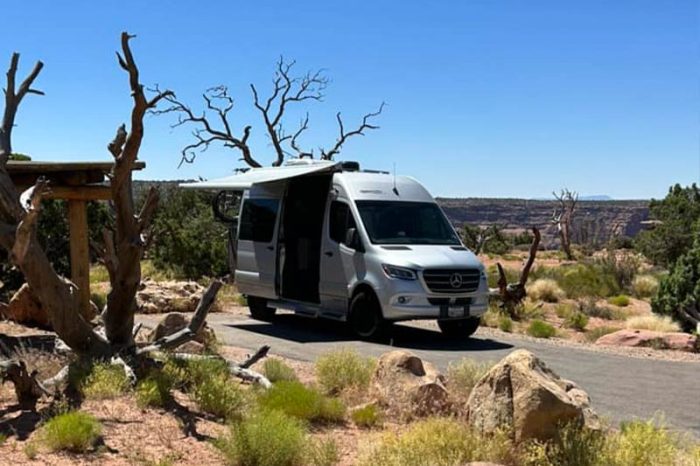
Weather and Climate in Utah
One of the most important parts of planning a vacation is the weather. Utah is a dry, semi-arid and desert-like state, one of the driest states in the US. Temperatures fluctuate from around 9F to 99F (-13C – 37C) with a dry heat that usually helps you to feel cooler. The temperatures fluctuate a lot, so keep that in mind when packing clothing.
Things to Do With Your Pets in Utah
Most state and national parks have areas where dogs are allowed on leash. Dead Horse State Park is one, and you are welcome to bring your dog with you on the trails, as long as they are on a leash and you clean up after them.
Willow Creek Dog Pond is a fully fenced area in Park City and features an off-leash park and a 1-acre swimming pond with a dock and agility equipment. There are shady benches for humans to sit and relax for a while.
Other Important Things to Know
- Bring Lots of Water: Because of the dry heat, you’ll want to pack a bunch of water. The dry heat causes sweat to evaporate quickly, and the dry air sucks out any moisture it can find. You’re not going to feel like you’re sweating a lot, but you will be, and it’s essential to replace that lost moisture with lots of cool water.
- Rain & Slot Canyons: The weather is unpredictable, and there’s one massive danger to exploring in Utah – rain. Do not go into slot canyons when it’s raining, if there’s rain forecasted, or if it has just rained. Slot canyons are long, narrow channels with sheer rock walls, some measuring less than 3ft across at the opening but dropping more than 100ft to the canyon floor. During flash floods or rain showers, these canyons become extremely dangerous.
- Leave No Trace: Utah’s National Parks are full of ruins of ancient Puebloan dwellings. They are marvellous to look at, but leave all artifacts where they are. These are essential pieces of history and deserve to be seen by everyone.
- Facilities: Utah is a vast state with lots of space between civilizations. Get gas before you leave a town, even if it’s just a small top-up. On Highway 95, there are 6 places to stop and fuel up. You don’t want to be without gas in the desert. This is compounded by the lack of cell phone service in most areas of the desert.
- Wear Sunscreen: Sunburn is probably one of the worst things to happen while travelling. While it may not feel hot in Utah, the sun is still just as intense. Reapply every two hours!
- Driving the Dirt Roads: We’ve mentioned flash floods already, which can be a problem in Utah, especially on dirt roads. These roads aren’t paved with regular asphalt and are often made with tightly packed dirt. When it rains, that dirt becomes a mud pile, which can quickly cause problems for your van. Some dirt roads will be washboardy, rocky, full of ruts, or feature really deep sand. It’s best to take them slowly and plan an alternate route to your destination if the road makes you uncomfortable.
- Elevation: If you’re not used to hiking or come from somewhere closer to sea level, hiking might be more difficult in Utah because of the higher elevation. At higher altitudes, the oxygen molecules are further apart, which means you get fewer oxygen molecules in each breath.
- Book Ahead: Utah is a tourist trap, with many travelling to see the beautiful mountains and landscapes. Try to book ahead to ensure you get the camping spot you want. Be aware that some hikes require permits, which can also be purchased beforehand.
- Be Aware of Surroundings: Utah has some of the most beautiful vistas in the world, but don’t let that distract you from the wildlife that calls this state home. Snakes, mountain lions, scorpions, tarantulas, and bears all roam Utah and don’t take kindly to humans invading their space. Observe wildlife from a distance, but do not disturb their habitat.
There’s a reason why Utah is a bucket list dream destination for many RV travellers. It’s a beautiful state, with lots of gorgeous vistas to see, many places to hike, and breathtaking campgrounds to stay in at night.


